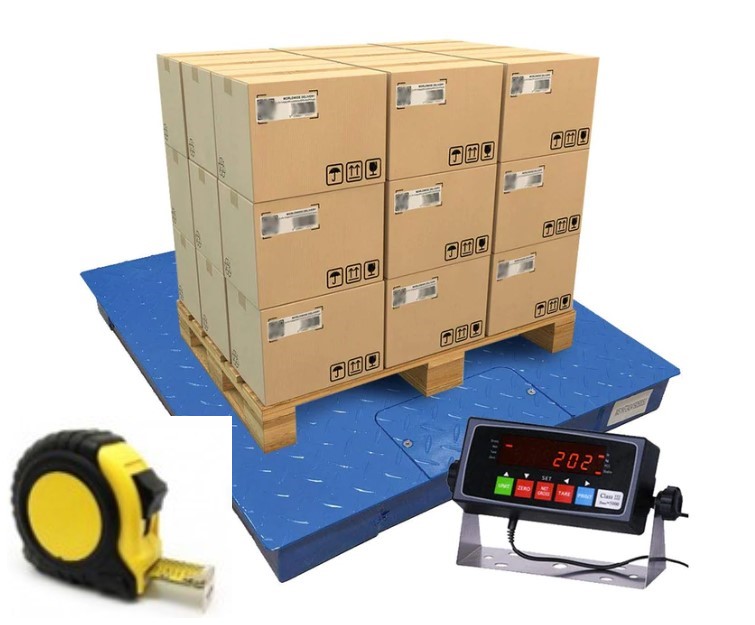-
08
May
Part 2 of 22 Ways To Reduce LTL Costs That Don’t Involve A Price Reduction

2. Know Your Weights, Know Your Dims
LTL shippers, it is in your absolute best interests to know more about your freight than your carriers do.
From an LTL pricing perspective, around 75% of the freight moving today is classified by density : weight divided by cube. Cube = Length * Width * Height. You can’t determine the NMFC freight class without knowing both the weight and the dimensions of each unit tendered to the carrier. Further, numerous carrier rules such as Mixed Commodity, Density Minimum, Cubic Minimum, and Over Dimension (Length) are based upon density or dimension. And finally, several carriers have or are rolling out true profile-based pricing options where the charges are based primarily on weight and dimension rather than NMF class.
Simply put, if you don’t know your weights and your dims, it is quite the challenge to generate an accurate quote before freight tender and have confidence your quote will match the carrier invoice?? This could mean:
- You don’t have control on your actual freight costs overall, by customer, by lane, etc
- You may be paying out much more in freight costs than you realize due to rebills
- You could be selecting a higher class than appropriate
- You have an over-taxed back office dealing with invoice disputes
- You are delaying payments to your carrier which can affect your credit
- You are not positioning your company as a Shipper of Choice
Knowledge is power, and your weight and dims are indeed knowledge. Your carriers are gathering significant knowledge regarding your freight profile. They reweigh nearly all of your shipments, and dimension most of your shipments. They use this knowledge to manage your business, which means price increases if they find unfavorable profiles. You need this knowledge to manage your business as well to ensure that:
- pallets are built to minimize space
- classes on the BOL are accurate and conform to the density
- costs are allocated properly on mixed commodity shipments
- over-dimension (Length) charges are accurate
- you are using the right carrier based your shipment weights and dimensions
- shipment weight and dim data is available when sourcing a new carrier
This last bullet is often overlooked. You may need to bring in a new carrier to handle all or part of your business for many reasons. This new carrier will want data substantiating your freight profile. If you don’t have this knowledge to pass to the new carrier, they are going to build that risk factor into the price they offer. But if you have solid weight and dimensional data, you can give the carrier the exact knowledge they need to analyze your business and offer the best pricing they can. And if that carrier starts generating reweighs and/or reclasses, you have the support data you need to discuss these invoice corrections.
If you have not done so, it is time to invest in your operation such that you own and control your shipment profile information. At the least, use a platform scale to weigh your freight. Yes you can use a database of weights by SKU, but I have found these lists quickly get out of whack and the pallet weight is either ignored or not accurate. Use a tape measure to measure your pallets. Static dimensioners are likely out of the question due to cost and lack of flexibility. There is an exciting and affordable solution coming out this year, a perfect solution for any shipper of any size or budget wanting to capture dims, weight, and even photos of your shipments. Stay tuned for more details.
LTL carriers are not perfect. Get to a position where you are confident that a carrier reweigh or reclass is a carrier error, and that you have adequate backup information to prove your case. Over time your carriers will see how the score plays out and this will be to your advantage. And if you can show your partner carriers that your BOLs are accurate, then your carriers benefit as well.
Your LTL carrier partners want to handle your business as efficiently and effectively as possible. They want to know the weights and dims of every one of your shipments, as soon as possible. This allows them to optimize their pickup, linehaul, cross-dock, and delivery operations. Knowing how large your pallets are is critical to ensuring capacity is available to pick up all of your freight. Help your carriers obtain this information by making it available to them, as soon as you can, on the pickup request and on the BOL. And help reduce the administrative expense by doing your part to eliminate reweighs and reclasses.
When it is time to re-negotiate pricing, or carriers come asking for a price adjustment, be prepared to show them all of the things you have deliberately and proactively done to help them keep costs down. That’s how you show your carrier partners you seek a true partnership.
- (479) 461-1672
- Contact Us
